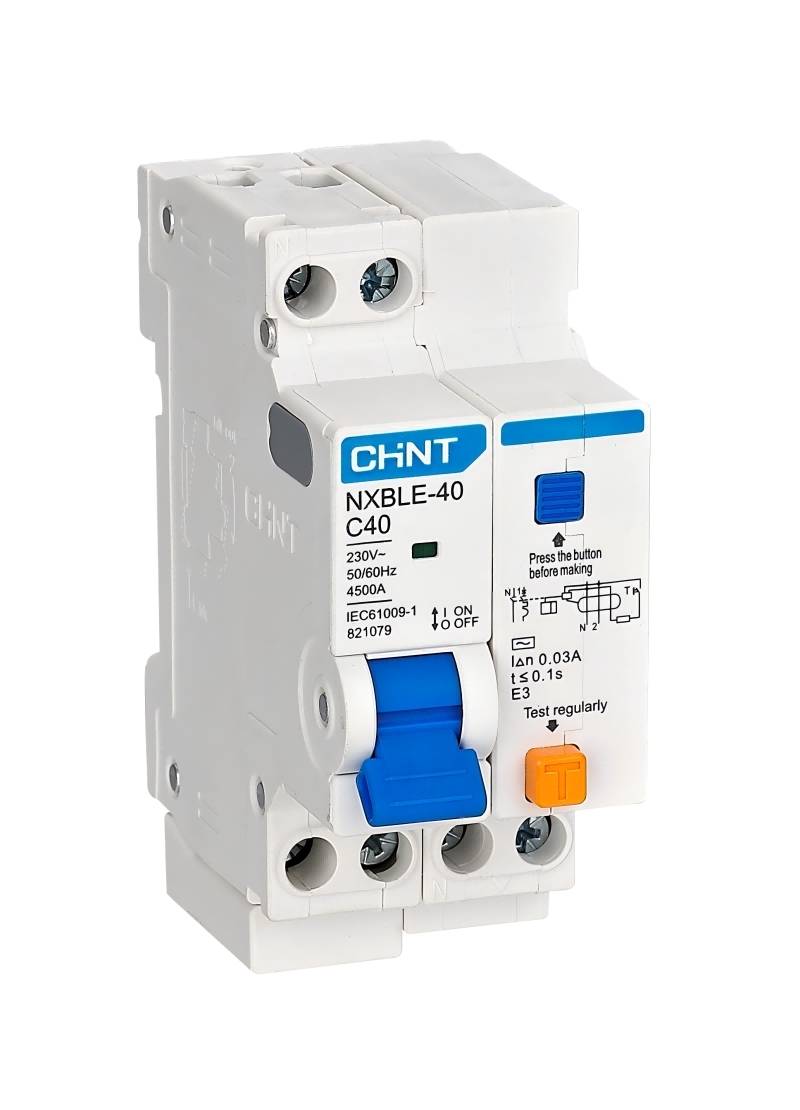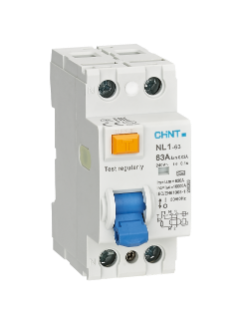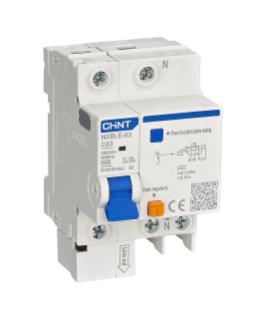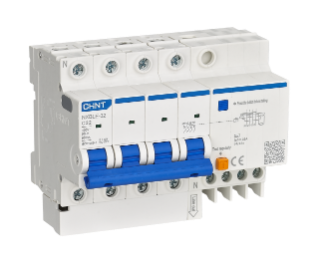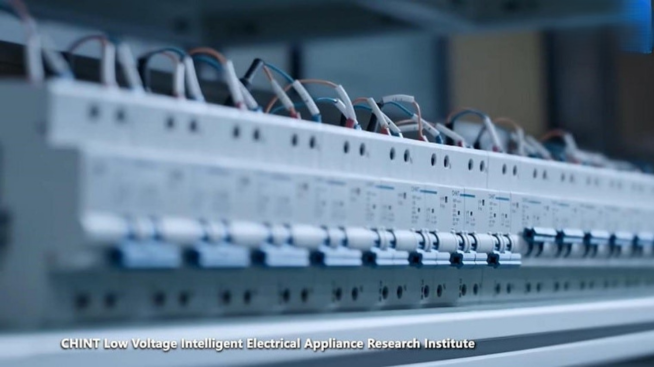An electrical system’s longevity depends on robust protection against short current, fault current, and overload. RCBO is a crucial component to attain such top-level protection.
Short for Residual Current Breaker with Over-Current, an RCBO can detect when electric current exceeds a safe threshold or a short circuit occurs. It can swiftly disconnect the circuit when a fault current happens and prevent wiring damage.
In this article, we explain what an RCBO is and how it works. We also explain its significance in achieving a safe and reliable modern power distribution.
What is an RCBO Breaker?
From the name itself, a Residual Current Breaker with Over-Current (RCBO) is an electric device that provides combined protection against residual current (Earth leakage) and overcurrent.
Residual current pertains to electricity “spillover” that happens when there is a break in the circuit because of an accident or poor electrical wiring.
For instance, if you accidentally cut a cable with a lawn mower, the electricity can travel through the lawnmower and electrocute the person holding the machine. An RCBO can step in when the cable is cut to terminate current flow and prevent an electric shock immediately.
Meanwhile, an overcurrent typically occurs when too many devices draw power from the circuit. Or, if there is a short circuit, which occurs when current flows along an unintended path with minimal or zero resistance. RCBO can rapidly disconnect the circuit once it detects an overcurrent.
How does an RCBO work?
RCBO operates based on Kirchhoff’s law - a circuit’s inflow current must be equal to its outgoing current. This device determines if the circuit’s current inflow via a live wire is equal to the one that flows through a neutral wire.
Say a fault occurs, the neutral wire’s current flow declines, and the differential current between the live and neutral wires signifies residual current. The presence of residual current triggers the RCBO to trip off the circuit connection.
How is an RCBO different from MCBs and RCCBs
Two devices, Miniature Circuit Breaker (MCB) and Residual Current Circuit Breaker (RCCB), are also known for protecting electrical systems. However, their respective functionalities are limited compared to RCBOs.
An RCCB is made solely as a residual current protection, while an MCB can protect the circuit only from short circuits or overload. RCBOs combine the protective functionalities of an MCB and an RCCB.
Consider CHINT’s NXBLE-40 Residual Current Operated Circuit Breaker (RCBO) made with overload protection, short circuit protection, and residual current operation. It supports up to 10000 cycles and 50/60 Hz frequency.
Designed for prompt earth leakage and overload detection, it combines the protective capacities of an MCB and RCCB to minimize the risks of electric shocks and fire hazards.
RCBO Breaker Function in Industrial and Commercial Settings
In industrial settings, RCBOs are extensively used in manufacturing plants and assembly lines to protect workers from electric shocks or high-cost machinery against short circuits or overloads.
Meanwhile, in most commercial environments like offices and retail spaces, RCBOs are primarily incorporated to provide protection for lighting, computer systems, servers, and power distribution circuits. This device is designed to prevent downtime by safeguarding against fault conditions.
Where Are RCBOs Required?
The International Electrotechnical Commission (IEC) and National Electrical Code (NEC) mandate ground fault protection in various industrial and commercial spaces.
For instance, residential buildings need an RCBO (preferably installed in kitchens or bathrooms) as a precaution against overload or Earth leakage. Moreover, offices and other commercial facilities are also compelled to choose RCBO as protection for their sensitive electronics and equipment.
In manufacturing workshops and plants, the IEC also mandates fault protection for operator safety and equipment longevity. RCBO is a recommended device to achieve this.
Meanwhile, the Occupational Safety and Health Administration (OSHA) also requires construction and installation sites to protect personnel and portable equipment from electric faults, preferably with a circuit breaker, such as a Residual Current Device (RCD) or Residual Current Operated Circuit Breaker (RCBO).
RCBO Circuit Breaker Wiring Guide
In this section, we provide an overview of proper RCBO wiring. Note that electrical system wiring can be highly complex and dangerous; it is highly recommended to consult a professional electrician before attempting the guide below.
- Prepare the RCBO, a screwdriver, and a wire stripper. Turn off the main power supply at the breaker box before starting any work. Use a voltage tester to verify if no current flows.
- Find the RCBO terminals by locating the “incoming” line and “outgoing” load terminals. These are usually marked with L (Line) and N (Neutral).
- Connect the incoming live wire to the "L" (Line) terminal. Also, connect the incoming neutral wire to the "N" (Neutral) terminal.
- Connect the outgoing live wire to the "L" (Line) terminal. Meanwhile, connect the outgoing neutral wire to the "N" (Neutral) terminal.
- In the distribution board, connect the earth wire to the earth terminal.
- Ensure all connecting screws in the wiring are tight to provide a good electrical connection. But do not overtighten the connection, as it might damage the terminals.
Note that RCBO wiring varies on whether you are working with a single-phase or three-phase system. Three-phase systems require a 3-pole or 4-pole RCBO. Make sure to read the manufacturer’s manual and datasheet for the precise wiring instructions.
How to Test an RCBO Breaker
The next stage is to verify if the RCBO breaker works. Follow the steps below to perform a quick test.
- Look for the RCBO’s “Test” button. The main power supply must be off before you proceed with the next steps.
- Press the “Test” button. The RCBO must instantly trip and cut off circuit power upon pressing. Otherwise, the breaker’s overload and leakage protection is faulty and needs inspection by a professional electrician.
- Switch the RCBO to the "ON" position. It will click its components into their default conditions automatically.
Experience Superior Fault Protection With a Leading-Edge RCBO Breaker
An RCBO breaker helps an electrical system and its components withstand overload and Earth leakage. Its dual protective capability makes it an essential device for the electrical safety of industrial, residential, and commercial facilities.
However, an RCBO’s protective qualities are tied to how they are engineered or manufactured. Therefore, it is essential to acquire an RCBO breaker from a reputable brand, such as CHINT, to ensure superior fault protection.
CHINT is a world-class innovator that strives to provide high-quality systems for energy storage, transmission, distribution, and consumption. Our top-notch RCBO solutions are made to support the dynamic electric protection demands of every business for a sustainable and uninterrupted operation. Go to CHINT and check out our available RCBO breakers.
If you have any questions or need further assistance, don't hesitate to reach out to us.




